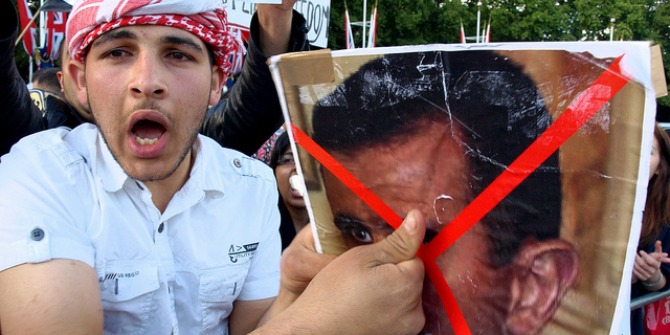Jean Baudrillard is recognised as a unique intellectual voice in many of the key debates and issues facing an increasingly globalised, media-driven world. Baudrillard Reframed offers students and others working with Baudrillard’s ideas an accessible overview of his better known arguments, as well as extending beyond them to critically engage with his radical notions of illusion, singularity and the fatal. Kim Toffoletti surveys the ideas of this often provocative French thinker as they relate to today’s image-saturated environment, demonstrating the relevance of his work to analysing contemporary visual phenomena such as advertising, photography, reality TV, fashion, art, pornography and virtual reality. Reviewed by Rebecca Litchfield.

Kim Toffoletti’s Baudrillard Reframed is part of a series re-examining a selection of philosophers and critical theorists with specific focus on how their writings are relevant to the arts. The particular aim is to look at their works in new ways, outside of the conventional frame of reference and to re-examine how they might be understood.
For those who might be new to philosophical minds (indeed, the series is aimed at undergraduate students) Jean Baudrillard was a twentieth century sociologist, philosopher, and cultural theorist, whose work is associated with post-modernism and post-structuralism. Toffoletti takes Baudrillard’s work and places it in the framework of the visual arts. Although this may seem like an obvious fit, given that Baudrillard is known to many for his work on signs, signifiers and images, Toffoletti wants to draw the reader’s attention away from surface understandings of these theories and examine them and their potential applications. She argues that attempting to “frame” Baudrillard is often restrictive, and does not allow a reader to “fully get to know” his work.
By exploring his ideas through a broad understanding of the visual arts, one that includes advertising, fashion and media portrayal or war, Toffoletti aims to avoid using Baudrillard’s ideas as simply an analytical tool. Instead she searches for “affiliations across his body of thought” using a thematic and “genealogical” approach, to interrogate his ideas and how they shift as our relationship to the visual arts, and indeed all things visual, changes. Her aim is reveal that the complexities of theorizing the visual need the radical approach that Baudrillard offers.
Toffoletti divides her work into four chapters – ‘The Image’, ‘Art’, ‘Consumption’ and ‘Screens’ – each addressing a different aspect of Baudrillard’s thinking in relation to these specific areas whilst demonstrating the correlations between all of them. Although the author states that her work is thematic, she does work largely chronologically within the chapters in order to trace the shifts and developments of Baudrillard’s ideas as things change around him. Toffoletti also constructs the book so as to introduce key ideas early on and build upon these using examples: a discussion of traditional art and simulacra in chapter one moves on to the more challenging topic of the formulation of identity through advertising, culminating in Baudrillard’s notions of the role of images in film, television and the internet, through a detailed discussion of the Gulf and Iraq wars and their representation in both media and films.
Throughout the work Toffoletti is careful to admit that Baudrillard has often been criticized by those attempting to engage with his ideas in relation to the arts due to his “fail[ure] to actually analyse any particular artworks, address the role of new technologies, or consider the specifications of non-Western contemporary art.” However, Toffoletti disagrees with this critique, stating that the very fact that his writing provokes reaction and radical thought is a reason for engaging with it. Furthermore, she offers her own analysis of particular artworks in place of Baudrillard’s in order to suggest a Baudrillardian response.
One of the great strengths of Toffoletti’s work is that the examples she uses for reference are contemporary. Often she draws on visual arts that have sparked public interest and debate, meaning that even those without a specific background in the discipline will be familiar with them. For example in chapter two, when talking about artists and simulacra she uses Banksy, the graffiti artists who’s work and style is now ubiquitous. Toffoletti moves from a discussion of Banksy’s work seamlessly into chapter two and the topic of Baurdrillard’s ideas about consumer culture through advertising and branding; an interesting transition given that Banksy had become a brand in his own right. Her engagement with the topic and desire not to side-step the tricky issues, such as Baurdillard’s comment that the Gulf War is a “non-event” that “did not take place” also makes for a particularly effective reframing. Toffoletti does not attempt to apologise for Baudrillard’s “failings”, inconsistencies, or “confuse[d] dialectical way of thinking,” instead she aims to demonstrate why this is the case, and perhaps how we can engage with his theories in relation to specifical visual culture, even when Baudrillard wouldn’t.
This is not a book that will necessarily give a reader an in-depth introduction to Baudrillard’s work, or a critique of it. What Toffoletti does is to offer a new approach to Baudrillard’s theories and a starting point for how to engage with these in relation to visual culture. The author recognises that the book is “a modest attempt to illuminate a fragment of Baudrillard’s elusive philosophy”and she completely succeeds.
Read more from the IB Tauris Reframed Series.
——————————————————————————————-
Dr Rebecca Litchfield began her academic career in American Literature at Warwick Univerisity, before moving towards urban and architectural theory at the Bartlett School of Architecture, UCL. Her thesis combined her passion for both subjects and explored the notion of “psychotopography” in the works of American writer Steve Erickson. In 2011 she took a step back from academia to start her own artisan preserves company. She now juggles days in the kitchen with freelance food writing, whilst continuing her academic passions through research, editing and review work. Read more reviews by Rebecca.







